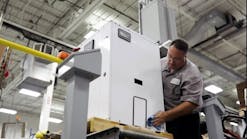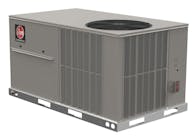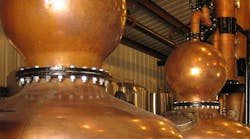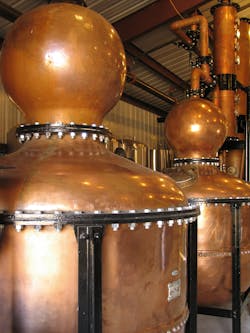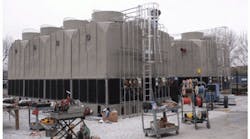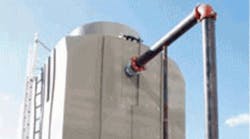Latest from Air Conditioning
Relocated Plastic Cooling Tower Handles Weather Extremes
When Paul Case and son Brian Case, owners of Kolani Distillers, decided to convert an old sugar mill in Paia, on the island of Maui, into a rum distillery, they knew they needed a reliable cooling tower.
“After vaporous alcohol leaves our stills, it runs through a condenser, which condenses the alcohol back to a liquid form so we can process it,” Paul Case said. “The condensers are cooled by water. So, we have to take that water, which becomes heated while cooling the alcohol, and send it to the cooling tower to reduce the water temperature and then back through the continuous condenser loop.”
Complicating the decision was Hawaii’s year-round high ambient temperatures, as well as the stiff gusts of corrosive salt air blowing in off the surf just a half-mile away.
Wind-blown salt and other corrosives are not kind to traditional metal-clad cooling towers, which can require maintenance such as resheeting, welding, and rebuilding within a few years. Typical plastic cooling towers are virtually impervious to corrosives, but prone to damage from the harsh ultraviolet (UV) radiation characteristic of Hawaii.
While researching available options, Paul Case learned of a 6-year-old cooling tower constructed of heavy-duty engineered high-density polyethylene (HDPE) available following the closing of a computer-chip-manufacturing plant in New Hampshire. The cooling tower—a Paragon model from Delta Cooling Towers Inc.—is relatively light in weight, impervious to UV rays, and corrosion-proof.
The Cases decided the price was right to buy the tower and have it disassembled, shipped to Maui, and reassembled at the distillery.
The cooling tower had operated flawlessly in Maui for several years when vandals climbed to the top of the unit and smashed the blades of the fan. Paul Case called Delta Cooling Towers’s headquarters in Rockaway, N.J., for help.
“I explained to them what had happened and that it was a secondhand tower,” Paul Case said. “Amazingly, they jumped right on it. They looked up the history of the tower and identified the fan assembly we needed to replace and shipped it out to us with service instructions.”
The distillery’s maintenance team was able to replace the entire fan assembly—a proprietary, non-corroding, fiber-reinforced, polypropylene unit—quickly. Immediately, the plant was back up and running.
“When you consider that the cooling tower had changed hands about five years ago and was about 15 years old, Delta Cooling really took fabulous care of us,” Paul Case said.
The fan system provides important energy savings because the tower controls regulate fan speed according to ambient-air temperature, Paul Case added.
“In the cooler morning hours, the fan doesn’t even come on,” Paul Case said. “Then, later in the day, as the ambient air warms up, the fan rotates automatically at the appropriate speed to cool the condenser water from up to about 180 degrees back to about 80 degrees.”
Paul Case said energy savings are especially important in Hawaii because energy costs there are among the highest in the country.
For Design Solutions author guidelines, call Scott Arnold, executive editor, at 216-931-9980, or write to him at [email protected].

